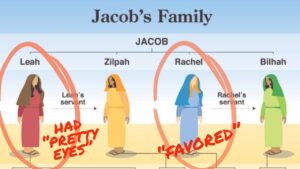We begin with mazel tov wishes to our dear friends Ronit and Dov Lederer -both made of the finest cloth-upon the upcoming wedding -at 6PM today with the heylige Ois and eishes chayil in attendance- of their amazing son Josh who will be marrying Sarah Berger, she the beautiful daughter of Leslie and Aron Berger, they of Brooklyn New York. Mazel tov wishes to the grandparents on both sides, to Josh’s brothers, to Sarah’s sisters and to both extended families. May Sarah and Josh merit to enjoy many decades of marital bliss.

The Expired Ban
Choidesh Elul is here; pre-season is upon us and soon enough we’ll be busy beating our chests for the various sins committed over the past twelve months. Ober, for now, let’s turn our attention to Parshas Shoiftim which covers a dizzying array of topics, mostly unrelated to one another; it’s what us Yiddin affectionately call a shmorg. Who among us doesn’t enjoy a good shmorg? Many would argue that the shmorg with its vast array of choices -if you chap- is better than the dinner; personally, the Ois agrees. And if you haven’t opened a Chumish all summer long because you were vacationing from the RBSO, you might consider learning Parshas Shoiftim which contains 41 mitzvis, mamish. Many are taka repeats – we are in summer repeat season – but also quite a few very interesting new halochis (rules) about the court system, kings, wars, and much more. It gets really exciting towards the end and leading into next week’s parsha about men, girls, booty and war, ober chap nisht, and keep your pants on. The introduction to this givaldige war benefit is laid out -if you chap- in this week’s parsha.
Though Sefer Devorim is known as Mishne Toirah (a repeat), it does contain well over 100 mitzvos – some say 200, quite the spread- that cannot be found in earlier seforim. And while you were wasting away your years committing aveyros of every variety, you could have had just as much fun had you spent just a bit of time absorbing the heylige Toirah that the RBSO was good enough to send down, not once but twice. Some say that twice is better than once; more on that below. And as an added bonus, Parshas Shoiftim happens to be chock full of mitzvis of every variety: ah-says (thou shall do) and of course the loi-sa-says (thou shall not do). Unfortunately, the lois have it over the ahs 27-14, kimat a 2 to 1 ratio, and given that Choidesh Ellul is here -mamish today and tomorrow- and because we’re inching up on Yom Kippur -the big one- the day of possible atonement, it’s best we pay attention to the parsha and learn what we shouldn’t be doing.
For many of you giferliche sinners, keeping the ah-says is less than half the battle; things get more complicated when it comes to not violating the lois. Seemingly, the yetzer hora seems to concentrate, excel, and typically also prevail -devil that he is- when it comes to the lois. And with Elul upon us, efsher it’s taka time to be –as the rebbe would often say- mefashfesh b’masov – somewhat reflective and introspective about our own giferliche actions during the past year, including as recently as yesterday, and the day before, say it’s not so, please. Hopefully the RBSO will find it in His heart to forgive you for all your many indiscretions. Then again you can efsher (maybe) invoke the emotional instability and insanity defense and tell the RBSO that you were once a normal person before your rebbe beat you -and himself- silly with his shteken, if you chap.
In Spark Notes fashion, here’s the gantze parsha in one paragraph. Moishe hands down rules and regulations for the establishment of a system of leadership in the land. He is , still pontificating and instructs the Yiddin on the appointment of courts, judges, and officers in every city. After delineating the process of prosecuting an idolater, the heylige Toirah teaches that the death penalty shall be imposed upon any scholar who renders a decision against the Great Sanhedrin (High Court of 71 Judges), no matter how important or great the disputing scholar may be. Shreklich!

The Yiddin are, according to some – but zicher not all- commanded to request a king once they have settled in the land. The king may accumulate wealth but avada not too much. Too much wealth is only reserved for modern day mukubolim (kabbalists) who, for a price, will predict and promise anything one desires. Interestingly enough, the next major topic is about prophecy, real and fake, and from there we are again reminded that avada we must protect the accidental murderer in special cities we call Oray Miklat, (cities of refuge). An entire tractate of the heylige Gemora called Makkos was written based on a few words in this parsha about Eydim Zomemim (false and conspiring witnesses). Towards the end of the Parsha and into the beginning of Ki- Saytzay -next week’s mamish thrilling parsha- the heylige Toirah discusses various halochis relevant to warfare. War preparations; conditions for exemption including fear of warfare, newlyweds who got called up to war before they had an opportunity to chap from their wives, and others, may stay home. We are taught that the enemy must first be given the opportunity to make peace, the Yiddin get permissions to chap a piece, and that they must be careful not to destroy any fruit trees while mounting a siege. Avada not all mounting is verboten, if you chap, which seemingly the RBSO allowed for soldiers in heat on the battlefield. Zicher you’ll be in shul early next week to learn all about the special permission granted to our dedicated soldiers as we study the case of the soldier in heat, the female fugitive (hot shiksa), the pre-marital sanctioned encounter, the chasuna and much more. Our Rabbis call this booty, gishmak!
The Parsha concludes with the case of the unresolved murder and the ritual of the ‘eglah arufah’ -the axed heifer- which serves as an atonement for the people of the neighboring cities for not preventing a murder. What the hec is an eglah arufah? Nu, this topic alone needs another 10 pages, but who cares? Have you ever seen an eglah arufah? According to legend this was the last topic that Yoisef Hatzadik and his father Yaakov were studying before his -less than holy brothers- ditched him – literally. And now, let’s focus in on a few highlights.
Speaking of war and piece…err I meant peace, in our parsha, we come across this most amazing posik (Devorim 20:5-7). “Then the officers shall speak to the people saying, ‘Who is the man who has built a new house and has not inaugurated it? Let him go and return to his house, lest he die in the war and another man will inaugurate it. And who is the man who has planted a vineyard and has not redeemed it? Let him go and return to his house, lest he die in the war and another man will redeem it. And who is the man who has betrothed a woman and not married her? Let him go and return to his house, lest he die in the war and another man will marry her.’” What’s pshat and what’s going on here?
Seemingly, before the Yiddin went to war, the Koihen would address the army and offer war exemptions. These folks were sent back to their families. The first three mentioned demonstrate the importance of a strong family life. A man who has built but not dedicated a house is to go home and dedicate it. A man who has planted a vineyard but has not harvested it is to go home for the harvest. A man who is betrothed to a woman to become his wife, but is not yet married is to go home and be married. Avada it’s understood that once married for a number of years, those very men were the first to enlist.
Says Rashi, and who understood people better than he?, azoy: these people have agmas nefesh (anguish of the soul). And these individuals can’t and won’t fight properly since their minds are preoccupied with finishing what they started. “Voish Achair Yachnichenu” (another man will inaugurate it) and avada we can chap that agmas nefesh is coming about only because the soldier is afraid that he will die in battle and someone else will complete what he started, or didn’t. Avada, we see from here and from so many other places how the RBSO understands humans and their needs; the RBSO is great and Thank You Hashem! He offers three exemptions from military service for extenuating circumstances. The RBSO who knows all, also chapped that men are behaymis (animals); seemingly the young wives not much better, and if these young men weren’t going to be home to take care of their neshey chayil (wives), others might be chapping in their stead. Ober raboyseyee, we can also see that Moishe is reminding the Yiddin that their future actually rests in family life. Without a strong, dedicated family, we are taka nothing. Veyter.

Shoin, speaking of serving the wives, let’s revisit a topic discussed in the past by asking this: Were the early Yiddin polygamists? Seemingly yes, at least some of them. Moreover, es-veyst-zich-ois (it appears) that polygamy was an accepted part of early Judaism. It was? Zicher you recall learning that our forefather Avrohom Ovenu had at least two vyber (wives) and let’s not avada forget that he also had multiple concubines. How many? Ver veyst, at least five and when he passed on, the heylige Toirah tells us what he bequeathed to ‘the children of the concubines.’ Seemingly; there were a bunch. Mistama you recall that Soro and Hogor, his two wives, were not the best of friends and mistama you’re wondering why the heylige Ois is mentioning this topic and these good people here in Parshas Shoiftim? Taka an excellent kasha ober soon enough the Ois will illuminate and it will all come together -polygamist style- if you chap. And before we do, let’s not forget that our forefather Yaakov (Jacob) had four wives including two full and two half-sisters, all from the zelbe tata Lovon – farbrecher (bad guy) that he was. Though he married all four sisters -basically the gantze mishpocho- Yaakov was still worthy and besides being one of our forefathers, was also the proverbial father of the entire nation of Yiddin. Yaakov was -despite the fact that he epes swindled his only and older brother Eisav out of the brochos and birthright- known for, and stood for emes (truth). Was that particular skill of his a prerequisite to greatness? Oib azoy, many are qualified! The bottom line: if he saw fit to have four wives, mistama this was the emes way. Sounds plausible to me. And mistama you recall that there came a time when Rochel and Leah also had their differences, petty jealousies and efsher more. Ober, our beautiful and emesdike heylige Toirah never shied away from describing these relationships; punkt farkert (the opposite is true). Many details of these marriages are revealed. And the bottom line? Polygamy, as stated above, was an accepted part of society, at least back then.

Says Rabbi Joseph Telushkin azoy: if the RBSO had intended to or wished to communicate polygamy as an ideal, He would have created “Adam, Eve and Joan.” Drum roll please! Ober we just learned that two of our heylige Ovis (forefathers), those we’re meant to emulate, had more than one. Oib azoy -that being the case- shtlet zich di shaylo (the question arises), which is the correct position? Nu, when it comes to polygamy, there is seemingly room for more than one position, if you chap. Veyter.
Efsher we can kler (posit) that since polygamy exists in the Toirah, it’s quite Ok and efsher even preferred. In fact, over in Lakewood and other such Yeshiva communities, they are considering a takono (special enactment) to allow the young men in kollel to taka marry more than one wife. And their reasoning? In today’s times, one wife cannot support a husband! Shoin, drum roll again please! On the other hand, efsher we can kler that although polygamy exists in the heylige Toirah, in every known case, it led to tzuris (anguish) for at least one or more parties. Seemingly, polygamy does lead to aggravation. Lemoshol, (by way of example), when Hogor becomes trugidik (pregnant) before Soro, there developed great acrimony between the two wives. And said Soro about Hogor: “Now that she sees herself pregnant, she looks at me with disrespect.” And said Hogor about Soro: “When she realized that she was pregnant, she looked at her mistress (i.e. Soro) with contempt.”
And di zelbe zach (same thing) unfolded in Yaakov’s not so quiet household where Leah felt unloved and unhappy in her husband’s home. Says the heylige Toirah (“God saw that Leah was unloved.”) and her sons come to hate Yoisef (Joseph) who was the son of the beloved Rochel (“Because of his dreams and words, they hated him even more.”). Need we say more? Avada we all know what happened to Yoisef because of the jealousies that ensued from his brothers unloved mother. Incidentally, stay tuned for next week’s parsha which will mamish address the situation where a man has two wives and loves one but hates the other. We’ll also learn what to do if a man has but one wife and still hates her, ober chap nisht, that’s all next week. Seemingly, the Toirah cases of polygamy are wracked with anguish and competitiveness and it’s efsher telling us without telling us, that polygamy was a disastrous family model.
Nu, the heylige Ois went searching for the correct and moral position on polygamy and reports as follows. Seemingly, polygamy was an atavistic (big word for a yeshiva buchir from Boro Park) practice, left over from a less sophisticated time. Even when polygamy was permitted, monogamy was always considered the ideal form of partnership between a man and a woman. And while the heylige Toirah did not immediately or ever forbid these unions, it seems that by the time of the niviim (prophets), polygamy was on the decline as they encouraged the Yiddin toward higher levels of moral and ethical behavior. That model didn’t work out too well; the Beis Hamikdash was ultimately destroyed -both of them- for bad behavior, ober that for another day.
Although polygamy was legal in Jewish society for a long time, it was still quite rare, especially in the post-Biblical period. As evidence, over the hundreds of years that the heylige Gemora was written, none of the rebbes mentioned had more than one wife; at least none that were discussed in the heylige Gemora, and since everything can be found in the heylige Gemora, and since they are not mentioned, we can assume that taka they didn’t have any. Gishmak!
Eventually, in the 10th century CE, the great Sage Rabbaynu Gershom issued a rabbinic degree banning polygamy. Rabbaynu who? He did what? Noch a mol please. Nu, about a thousand years ago, Rabbaynu Gershom, one of the greatest rabbis of his time, issued a takono (prohibition) against marrying more than one wife. Nu, as expected, many men loved this idea and ever since, in many Ashkenazi (European) countries, under most circumstances, men have been limited to one wife. In the regions where it was accepted, the ban included a cheirem (excommunication) for violators. In the areas where it was not accepted, it had no force whatsoever. The common understanding is that this prohibition applied to all Ashkenazi Yiddin wherever they may be, for all generations and under all circumstances. Ober is that really the case? Was it a lifetime ban, or more of a baseball type ban for a finite period of say 150 or even 200 years? And did everyone hold from the ban? Nu, lommer lernin, ober one thing is quite zicher. The Yiddin over in Yemen never accepted the good Rabbi’s ban and until this day practice polygamy. Are they happy with two or more wives? Ver veyst?

Says Professor Avraham Grossman (Hebrew University) azoy: Rabbaynu Gershom was merely rubber-stamping a changed social reality; by the time the ban was issued in Mainz, Germany in 1000, most Jewish communities had no polygamy. More significant was his edict forbidding a man to divorce a woman against her will, which according to Grossman, marked great progress in the status of women in Jewish law.
On the other hand, Rabbaynu Gershom himself wrote three t’shuvois (responsa) stating that his takono does not apply in the case where the wife has no children, or has ceased to have children (Otzar HaPoskim Even Haezer 1:10 pages 14a and 14b). And says the Tashbetz azoy: If the first wife consents to a second wife, the husband can taka marry wife number two, and in cases where consent is taka given, there never was a ban (Tasbetz sh’eilah 94). Givaldig! Ober says the Ran: it is likely but not absolutely certain that, in such a case, it does not apply. (Sh’eilos Ut’shuvos HaRan end of siman 48, quoted in the Beis Yosef). Which is it? Ver veyst?
Moreover, almost all agree that in certain exceptional circumstances, such as the wife becoming insane, a man can secure the signatures of one hundred rabbis, and is then allowed to institutionalize his wife and marry another. Such signatures are typically for sale. Gishmak! Nu, though many men have given this option serious thought, few have executed. They opt for simplicity and will simply go out and find themselves some temporary relief, if you chap, or even a girlfriend. Shoin!
And says Rav Yaakov Emden: the reason for the ban was danger from the uncircumcised goyim (Christians) among whom we live. Christianity worked hard over the period from about 600 c.e. to 900 c.e. to eliminate polygamy in Europe. By the year 858, Herard of Tours got so far as to limit people to two wives. Shortly thereafter, the ban among Christians in Europe became almost complete, and they were soon restricted to only one wife. Since the Christians were now banned from something that had been normal practice for many years, they resented the fact that the Yiddin could continue to have more than one wife. When goyim are jealous and otherwise resent the Yiddin, the result is almost always that Yiddin get killed. To prevent such massacres of the Yiddin, Rabbaynu Gershom banned polygamy. Veyter.
Ober hear this! It’s taka emes that most of you grew up hearing that there was such a person known as Rabbaynu Gershom and that he enacted the ban on polygamy, ober what we never knew was when, and if, it expired. Seemingly, the ban was to last only until the year 5000 and said Rav Emden: the takono is a result of our living among goyim. It would be better to eliminate the ban. The ban is only until the year 5000. Let’s not add on to the ban. Hey, his words, not the Ois; don’t shoot the messenger. The ban was limited geographically to Germany and the parts of France that were nearby. It spread to Poland and European Russia. It was not accepted in Southern France, Spain, Italy, Greece, Turkey, Israel, Africa and Asia. In other words, the ban is over; let’s party. According to most poiskim, including the Shulchan Aruch and the Rama (Rav Moshe Isserles), the ban was taka but temporary, until the year 5000. It continued afterwards as a custom in many places in Europe, but no longer had the force of a cherem.
Ober, people think that there is something basically immoral about having more than one wife. In Israel, it is forbidden by law. Some continue to hold that if the heylige Toirah which is our guide for life and which avada we follow closely, tells us that polygamy was practiced and nowhere does it say that it’s ossur (verbotten), that it still is ok today. However, all the Toirah cases of polygamy are epes wracked with danger, anguish and more. Dovid Hamelech (King David) had issues with the sons of his many wives and we imagine that Shlomo Hamelech (King Solomon) had his hands full servicing his 1000 wives and concubines. Efsher the heylige Toirah is telling us that polygamy was taka efsher a disastrous family model? Ver veyst.
And the bottom line? Polygamy, was once an accepted norm in most human societies, but now its practice is quite limited and most people consider the idea of a man having two wives as somehow immoral. The final bottom line: It does appear that the ban is over. As to why most men don’t marry a second or third wife, it’s quite poshit: they don’t want to!
A gittin Shabbis and Choidesh
The Heylige Oisvorfer Ruv
Yitz Grossman
